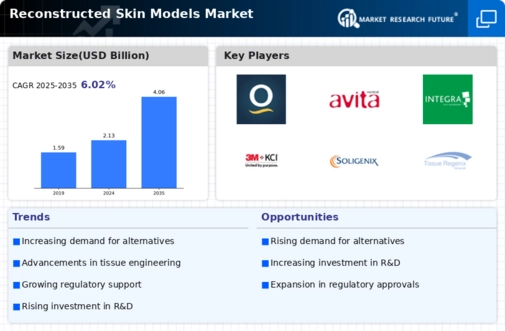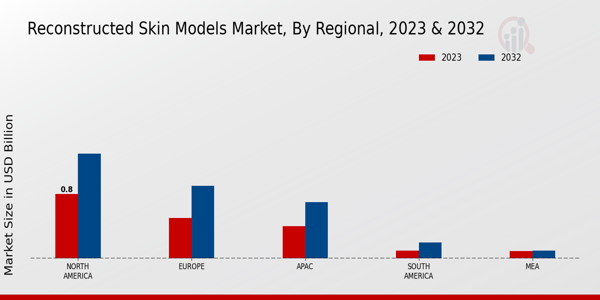The growing necessity for alternative testing techniques that do not require animal testing is propelling the market for rebuilt skin models. Companies are using recreated skin models as a result of growing awareness of ethical issues in pharmaceutical and skincare trials.
Furthermore, novel approaches are being offered by developments in tissue engineering and regenerative medicine, enabling more complex and precise models that can replicate the traits and behaviors of human skin.
As a result of this move to more sophisticated testing techniques, preclinical trials are becoming more reliable, which is driving market expansion. In this dynamic economy, there are many opportunities to seize.
The Reconstructed Skin Models Market is driven by a rising demand for alternative testing methods that eliminate the need for animal testing. Growing awareness about ethical considerations in skincare and pharmaceutical testing is steering companies toward adopting reconstructed skin models.
Additionally, advancements in tissue engineering and regenerative medicine are providing innovative solutions, allowing for more sophisticated and accurate models that can mimic human skin characteristics and behaviors. This shift towards advanced testing methods is improving the reliability of preclinical trials, further boosting market growth. There are numerous opportunities to be captured in this evolving market.
As research in regenerative medicine continues to advance, there is potential for new applications of reconstructed skin models in various fields, such as toxicology, drug development, and cosmetic testing. Collaborations between academic institutions and industry players can lead to cutting-edge innovations, further enhancing the market's potential.
Moreover, there is scope for expanding the geographic reach of these models into emerging markets, where awareness about alternative testing methods is beginning to gain traction. Recent trends indicate a significant increase in the use of 3D skin models that offer better mimicry of in vivo conditions.
The rise of personalized medicine is also influencing the market, with a growing focus on creating tailored skin models that reflect individual patient characteristics. Sustainability is another key trend, pushing companies toward eco-friendly and efficient production methods for reconstructed skin models.
Overall, these trends collectively reflect a transforming landscape, allowing for more ethical, efficient, and accurate methods of research and testing in various industries.
The increasing demand for ethical alternatives in cosmetic testing is driving innovation in reconstructed skin models, which are poised to transform the landscape of dermatological research and product development.
U.S. Food and Drug Administration (FDA)























Leave a Comment